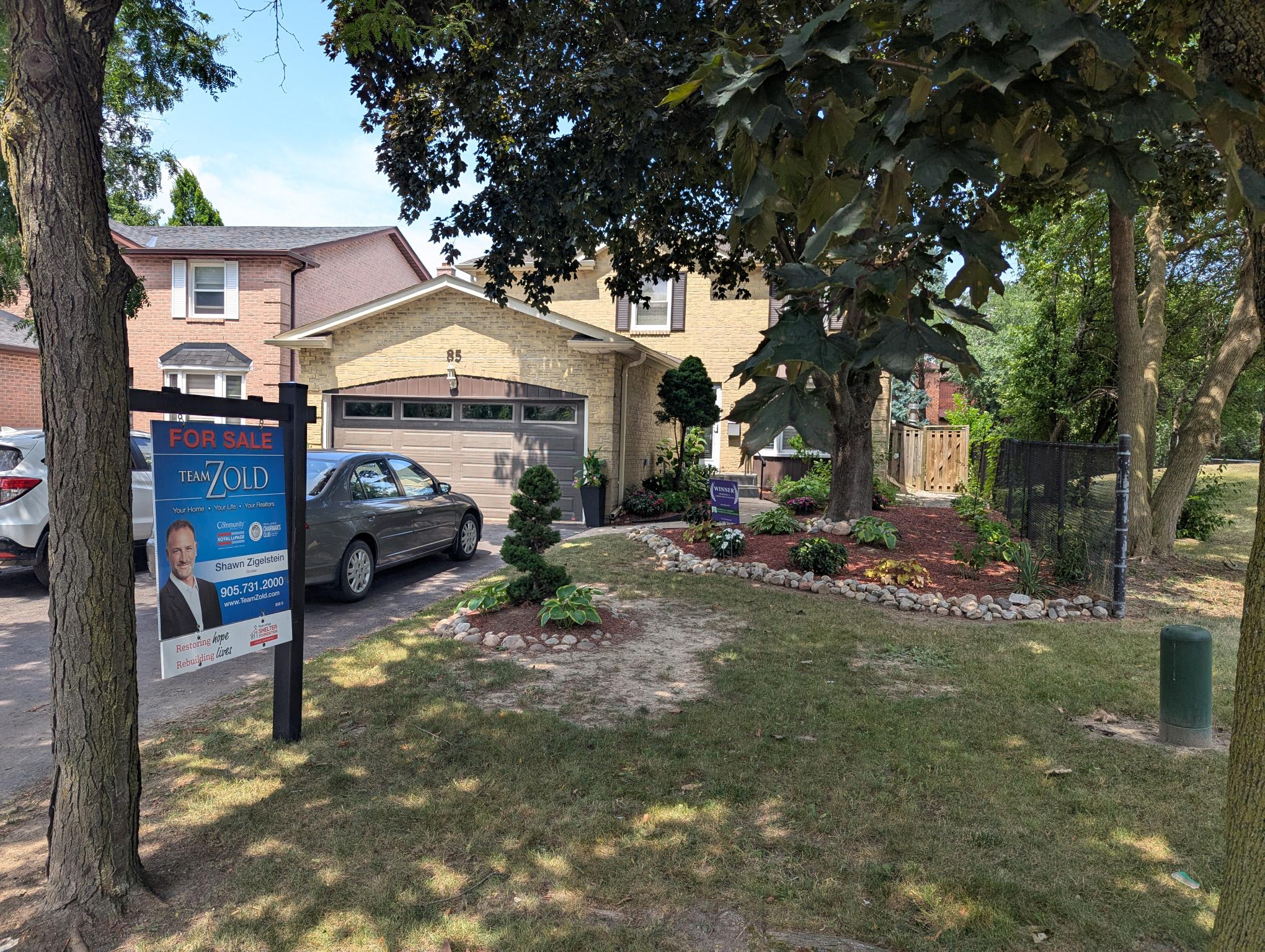
Buyers finally have the advantage in Toronto real estate market
Glut of inventory in GTA giving homebuyers some leverage in negotiations
By Jane Switzer
Published Sep 04, 2025
The days of cut-throat bidding wars appear to be over in the country’s biggest real estate market, as a glut of inventory in the Greater Toronto Area (GTA) is giving homebuyers some leverage in negotiations.
“Buyers don’t have to jump into the bidding wars and the craziness that we had a couple of years back, where some were potentially overpaying,” said Shawn Zigelstein, a broker at Royal LePage Your Community Realty in Richmond Hill, Ontario. “Buyers have the opportunity now to go in and negotiate price, conditions and other things they may want in a contract.”
The Toronto Regional Real Estate Board’s (TRREB) latest market report, released Thursday, showed the average selling price for all home types across the GTA decreased 5.2 per cent year-over-year in August to $1,022,143. The composite benchmark price, which represents a “typical” home, was also down 5.2 per cent.
Meanwhile, new listings were up 9.4 per cent year-over-year with 14,038 properties going up for sale, “reaffirming that buyers continue to benefit from a well-supplied market,” the report said. TRREB data shows 5,211 homes were sold in August, a year-over-year increase of 2.3 per cent. On a seasonally adjusted basis, sales were down 1.8 per cent compared to July.
While more detached homes, semi-detached homes and townhouses sold last month compared to August 2024, year-to-date sales of all property types are down. The decline was led by condominiums (16.6 per cent) and followed by townhomes (13.1 per cent), detached homes (12.5 per cent) and semi-detached homes (4.1 per cent).
Condos and townhouses had the highest inventory, accounting for 68 per cent of active listings in the city of Toronto, said Tom Storey, a realtor with Royal LePage. Storey said Toronto is currently experiencing a buyer’s market for condos, a balanced market for detached homes and a seller’s market for semi-detached homes. “The big difference in today’s market is, typically, sellers are deciding to list their property slightly higher than they want, to leave room for negotiation — versus when there was nothing for sale and you knew buyers were lining up, you would list it really low and do an offer date. The strategy has changed,” he said.
Condo sales fell 4.9 per cent in August compared to last year, and average prices dropped five per cent to $642,195.
Storey said smaller, “cookie-cutter” condos are having the biggest price drops, as investors sit on the sidelines and first-time homebuyers and dual-income households gravitate toward larger units. However, unique condos with a “wow factor” are still selling fairly quickly. “Most of what we’re seeing in this sales data is end users buying properties to live in, not investors and speculators,” said Storey.
Detached homes led price declines among all property types, as average prices dropped 7.5 per cent in August compared to last year.

“It’s very rare for condos to see something sell over the asking price. But we’re seeing it with homes too, where most of the listings coming to the market are saying, ‘Here’s my actual price, let’s negotiate,’ versus playing the list low game,” he said.
But the concept of affordability is still a relative term in Toronto real estate. The average price of a detached home was $1,312,240 in the GTA, and $1,524,066 within the city of Toronto.
The average price of semi-detached homes in the GTA declined by 4.2 per cent to $980,102, while townhouses declined by 3.8 per cent to $860,178.
“A household earning the average income in the GTA is still finding it challenging to afford the monthly mortgage payment associated with the purchase of an average-priced home. This is even with lower borrowing costs and selling prices over the past year,” TRREB chief information officer Jason Mercer said in a press release.
Mercer said buyers may emerge from the sidelines if the Bank of Canada decides to cut interest rates at its next meeting on Sept. 17. The central bank issued seven consecutive rate cuts between June 2024 and March 2025, before holding its benchmark rate steady at 2.75 per cent in April, June and July.
A drop in interest rates may help with affordability, but Zigelstein said it’s unlikely to jumpstart the market when uncertainty continues to hang over the economy.
“Between trade wars, investment portfolios, career paths, there are a lot of question marks for a lot of people out there,” he said. “I don’t think (they’re) jumping into real estate as they were in the past until they get that security.”
Total active listings climbed 22.4 per cent year-over-year to 27,495 in August, but were down from 30,215 in July. Both Zigelstein and Storey said August is typically a slow month for real estate, but fall will provide a good indication of where the market is headed for the rest of 2025.
“I think what we’re going to see is inventory levels continue to rise, prices staying very similar to where we’re at right now and new listings continuing to show up on the market,” said Zigelstein.
Storey said some sellers who weren’t getting the price they wanted took their properties off the market to enjoy the summer, and he’ll be watching to see whether those listings return. Investors coming back into the market could push up sales numbers as well. “Are they all going to come back in mid-September or October, or are they permanently off the market now? Because the amount of homes for sale will directly correlate to how much inventory there is, how many options buyers have, and that will eventually impact which direction the market goes,” he said.
Full post is here.
